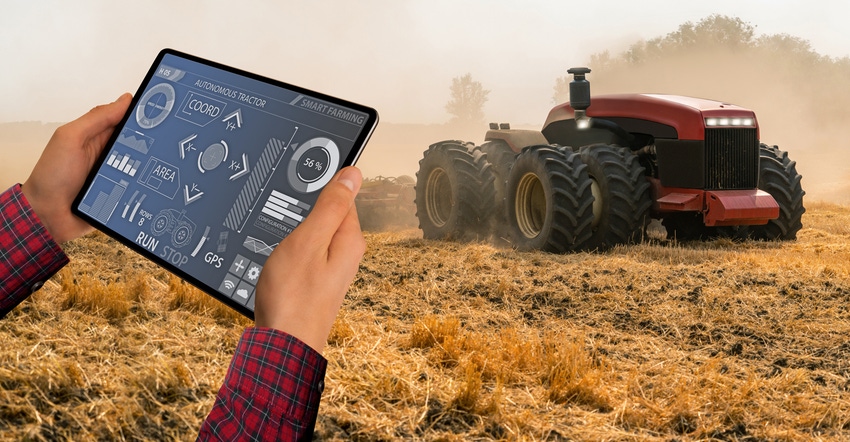
Agriculture in space, autonomous combines and web applications were among the topics discussed during a recent webinar hosted by the Agricultural Utilization Research Institute featuring Grand Farm of Fargo, N.D.
Launched in April 2019, the Grand Farm initiative was developed to "accelerate the research and innovation into technology, which will be present on the farm of the future."
“For us, the Grand Farm is about the future of agriculture technology,” said William Aderholdt, Grand Farm director. “We believe that the Red River Valley can help effect change across the world through technologies that are established with the farmer-centric mindset.”
Among the challenges the initiatives has set out to solve are feeding the world’s growing population, addressing the agricultural labor shortage, attracting venture capital, addressing the workforce skills gap and improving agricultural workplace safety.
The agricultural system has 30 years to figure out how to feed 10 billion people and do so sustainably, Aderholdt said, while at the same time coping with an agricultural labor shortage that has existed for 50 to 60 years. There’s optimism that autonomous technology and other advanced ag technology can help ease the labor shortage, but that creates a need for new workers who may not have considered a career in ag. There is also a need to invest, and the Midwest is well-known for its lack of venture capital, he said.
To address these challenges, Grand Farm is thinking globally by creating what it calls a “global ecosystem” to bring people together. If there’s a silver lining to COVID-19 restrictions, it’s that virtual programming accelerated the growth of global connections, Aderholdt said.
Grand Farm is a place where people can come together to test and demonstrate their technologies and capabilities. In 2020, there were 41 projects on the 45-acre test site. The initiative attracted 750 people to 22 events.
Looking ahead to this year, Grand Farm is planning for Thursday events, including grower roundtables.
“What these grower roundtables are meant to do is to bring growers and industry together to talk about pain points around specific topics — so for instance, we’re going to be talking about crop and soil management,” said Andrew Jason, special projects coordinator. Grand Farm officials also plan to bring the public to the farm to expose them to what is happening in agriculture and the innovation that is occurring.
Autonomous vehicles, agriculture in space
One of the things happening in agriculture is autonomous vehicles. Aderholdt expects mass production of autonomous farm equipment in five to 10 years. This technology brings opportunities, as farmers can spend more time managing their operations and less time in the tractor seat. This equipment can potentially run 24/7, and it opens a world of questions: Can the equipment be sized so that instead of investing half a million dollars for a combine, 10 $50,000 combines can be purchased? Can each harvest a separate crop that was planted on the same land by an autonomous planter? Will autonomous technology allow farmers to plant two crops at once on the same land? Will autonomous vehicles allow mechanical operations to replace chemical ones?
Another growth area is web applications, Aderholdt said. The last five years have been all about sensors and getting sensors on the farm, and now there’s a ton of data being generated. How do farmers take that data and learn from it?
“We’re starting to see a lot of companies develop their own application for how, when you collect the data, you can understand what to do with it, and it can provide you with real-time information,” he said. An example might be something that tells growers how much water is in the ground so they can make changes to their drainage system based on the forecast.
Grand Farm isn’t focused solely on crop production; it also has projects involving cows, including tracking systems.
For Jason, one of the coolest projects is space agriculture. Grand Farm is actively engaging with NASA, and there have been talks about putting a test plot out to showcase agriculture that could happen on Mars. There may also be a conference this summer.
Kubat Willette is a Farm Progress digital content creator.
About the Author(s)
You May Also Like




